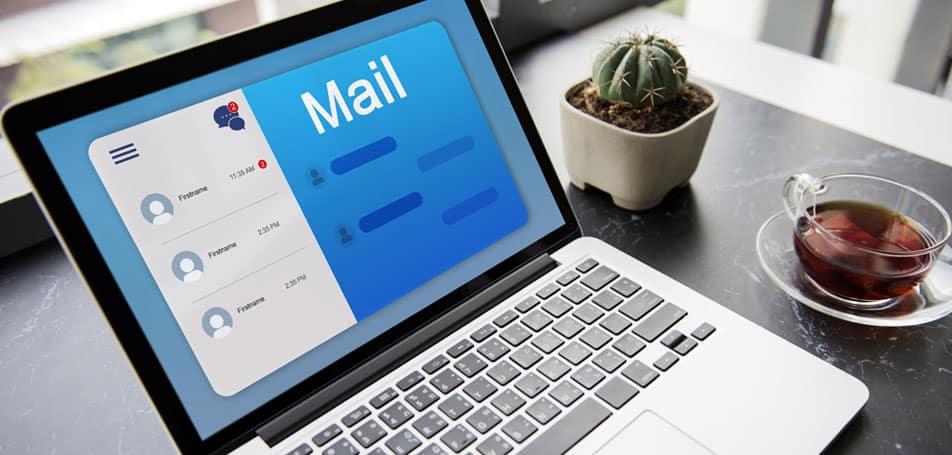
There’s no lack of digital writing tools to provide lots of automation for email campaigns. Audiences can be segmented based upon their positions in a sales funnel; email sends can be calendared and automated; there are automated responses – new subscriber welcomes, order and shipping information, feedback surveys, and more. All of these things certainly ease a lot of marketers’ tasks that were once done manually.
But who actually composes the subject lines and the content of these emails? Smart marketers know that this continues to be their job, and if those automated sends are to resonate, they must craft compelling and engaging content. No automated email system can substitute for this.
Crafting emails that prompt opens and get the responses and conversions a business needs are both an art and a science. The “art” relates to the creativity of composition. The “science” refers to data gathering, a full understanding of the audience, and the “triggers” that will resonate with them.
This article will focus on writing tools that marketers can use to create amazing and engaging content that will resonate with their subscribers.
Here are 16 of those writing tools that can make email content creation compelling and engaging. They are categorized according to the activities that should be involved in crafting effective email campaigns.
- Create Compelling Subject Lines Through Headline Tools
Most consumers simply scan through those email subject lines. And most of those are just skipped over or deleted. Your subject line must capture interest if you expect an open. There are lots of tools to use to create and evaluate your subject lines. You can use Co-Schedule headline analysis tool; there is also a Buffer tool that will analyze multiple headlines to report those most resonating with your audience.
The key to an email subject line is to stand out among all the others. One tool that you can use is your own behavior when going through your emails. Which ones pique your interest and make you want to open them? Use these to guide how you craft your own headlines.
There is also a lot of content to research about creating headlines. For example, Neil Patel has a comprehensive guide for crafting headlines that every email marketer should study. While much of this guide focuses on headlines for blogs and social media posts, the concepts can easily be translated to email subject lines.
There are also headline generator tools that you can use. Craft a normal, and possibly very common, subject line, and use any number of these tools to get ideas to make it more engaging. You can plug in keywords or an entire title and get hundreds of possibilities.
- Simplify Your Message
Each email should have a single message unless it is a newsletter. But whichever it is, it must be simple and to the point. No consumer of emails wants to read walls of complex and/or sophisticated vocabulary and sentence structure. Most effective content researchers agree that reading levels of any marketing content should be at about the 7th grade level. You can check this with any number of tools. If you use WordPress, the Yoast plugin will provide a readability level. Hemingway editor is another writing tool that will give a reading level and make suggestions for simplifying your writing. Another popular and effective tool is Grammarly – an app that will check not just readability but also such things as plagiarism and grammar errors.
- Personalization
Successful marketers have developed a customer persona. They know their customer pain points, values and belief systems, demographics, senses of humor, and specific needs for products or services. This collected data should be considered when crafting emails that will resonate with your readers.
Simply addressing your readers by name is what an automated system does. But that is not enough. You can gain additional information through Crystal, a tool that will help you understand your reader more and share your brand personality as it is compatible with their personas. You want your emails to establish that relationship, so they see you as a trusted partner who provides value to their needs and wants.
- Getting Creative with Your Message
It’s not just the subject line that must be creative and engaging. The message itself must be too. People like to be educated but also entertained and inspired. If you do not have a bent toward creative writing, you can find an online writing service or freelancers who do. Contact them, give them the message you want to send, and let them work on it. Your recipients’ goal is to look forward to your emails because they are always informative and creatively composed.
- Get a Focusing Tool
It’s easy to get distracted by any number of interruptions while trying to focus on composing engaging email messages. If you cannot “turn off” calls, texts, social media, and such, you need a tool that will help. First, turn off your phone and alert co-workers that you will not be responding to emails, calls, and texts. Second, get a tool that will cut off your access to everything else that is online distractions. Focus Me is one of the most currently developed apps, but it is fee-based. For a free app that does much the same, you can download KeepMeOut. You enter the URL’s that you want to block and the time frame for blocking. The tool does the rest.
- Tools for Adding Visuals and Other Media
As mentioned earlier, walls of text are not appealing to consumers who are busy and on the go. If you can say it with a visual or other media, do so.
Fortunately, there are plenty of tools to use to create those visuals. Colorcinch is a photo editor and cartomizer that’s simple and free to use! With its AI-powered photo enhancers, users can instantly create and edit photos into personalized artwork. Similarly, Canva will let you create lots of graphics, including charts, graphs, infographics, and even animation. There are also plenty of tools to create your own videos, and it appears that consumers prefer these to be professionally produced. They are more authentic and help to build trust.
There are also tools to create interactive email content for surveys, quizzes, and even augmented and virtual reality experiences. Suppose you are in the travel business. Providing a virtual tour of an amazing vacation spot, even in real-time, is now possible. And consumers will be attracted to these experiences with a compelling subject line.
- Writing Tools to Get and Remember Email Topic Ideas
Suppose you are an online retailer of kitchen tools and gadgets. Your emails can certainly feature those unique tools and gadgets, but your emails should contain more than just a sales pitch. You can craft content that promotes value or provides education on a number of kitchens and cooking-related topics. When you brainstorm topics, you will want to remember them. Be certain to have a tool to enter all of these topics. And when you are running short on ideas, you can use a tool like Buzzsumo, type in a keyword or two, and get a number of popular posts and articles. This may provide more ideas for email content. Then plop those ideas, along with others you have come up with into an app like Dropbox.
Seven Categories and 16 Tools
Make no mistake about it. Email marketing, if done right, still provides the greatest ROI, about $42 in revenue for every $1 spent. With these stats, it only makes sense to develop the very best email campaigns possible. These 7 categories of strategies and the writing tools that accompany them should be considered by any marketer planning to use email marketing.


















